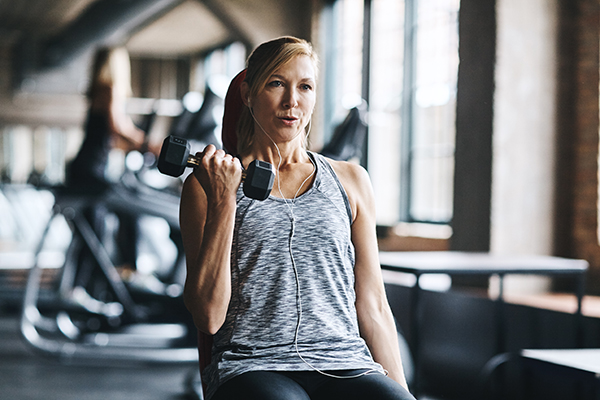How to Get and Stay Fit Over 40

As you age, your body may encounter a few fitness hurdles causing your mile time to go up while the maximum weight you can lift decreases.
With the odds seemingly against you, can you still get and stay fit over 40?
“Yes! You can get fit after 40,” says Trevor Thieme, C.S.C.S.
“The body gradually becomes less efficient at torching fat and building muscle and endurance, but it never loses those abilities. We remain adaptable from the moment we’re born to the moment we die, so there’s always an opportunity to become leaner, stronger, healthier, more powerful, and more energetic,” he explains.
Here are five workout tips for getting and staying fit over 40.
1. Move According to Fitness Level, Not Age
When it comes to picking the best workouts for you, your chronological age is significantly less important than your fitness level and “training age,” a.k.a. how long you’ve been (consistently) training.
“I’ve lifted and run all my life,” says Thieme. “And at the age of 46, I’ve never been stronger or faster. The key at any age is to perform workouts and exercises that suit your fitness and mobility levels.”

2. Prioritize Muscle-Strengthening Workouts
Sad fact: People start to lose muscle strength and mass starting in their 30s.
So by the time you cross the 40-plus threshold, if you’re not consistently challenging your muscles, you’re significantly losing them.
To sufficiently challenge your muscles and stimulate their growth, focus on working all of your body’s major muscle groups (arms, legs, hip, back, core) to fatigue a few times per week.
When working to fatigue:
- Your last couple of reps in your last set of an exercise should feel like a tough challenge.
- You should be able to just complete your last rep with solid form.
If you plan to strength train three or fewer times per week, stick with total-body workouts, and give yourself at least a day between them to recover.
If you have time for more strength sessions throughout the week, you can try splitting things up between upper- and lower-body or by individual body parts.
Just aim to not fatigue any given muscle group on back-to-back days, and give yourself time for recovery.
Pro tip: Try a strength-building fitness program like LIIFT4 or #mbf Muscle Burns Fat. Or sign up for BODi to find the best workout for you.

3. Up the Recovery
Speaking of recovery, prioritize it! After all, no matter how fit you are, your body may require more recovery between tough workouts than it used to in years past.
That’s because your body becomes less efficient at repairing and building muscle.
For example, during menopause, levels of both estrogen and testosterone can lower. Testosterone is also known to naturally decline in men as they age.
“More” recovery can mean something different for everyone.
For example, while some people may need more rest time between their workouts, others may benefit from implementing additional workout recovery techniques.
Options include:
- foam rolling
- massage
- easy cross-training (e.g., low-intensity walking, hiking, cycling, etc.)
- stretching
As a rule, approach your recovery in a way that lets you perform every workout pain-free and with good form.
If you’re so sore that it’s a challenge to sit down at your desk, then you need more recovery before attack your next strength session.
Pro tip: Try these 11 easy standing stretches or this series of 5- to 10-minute stretching sessions.

4. Add in Some Mobility Training
Mobility work should be part of your workouts at any age, but joints tend to become more finicky as time goes on.
The result: They need that much more love.
Take a few minutes at the beginning and end of each of your workouts for mobility work.
During your warmup, foam roll your entire body and focus on the muscles you plan to work that day.
Also, perform dynamic stretches — such as leg swings, T-spine rotations, and wall slides.
This will help to increase blood flow, lubricate your joints, and enhance your range of motion. The result: greater performance and fewer injuries.
5. Listen to Your Body
Every body is different and reacts slightly differently to any given workout.
Even the same body (yours!) can react differently to the same workout on different days, so listen to it and heed what it’s telling you.
If you’re feeling good, increase the intensity. If your energy is lacking, decrease the intensity (and don’t give yourself any flack about it).
By adjusting your workout to your current physical and mental state, you’ll always challenge yourself enough to optimize change, but not so much that you increase your risk of overtraining or injury.
